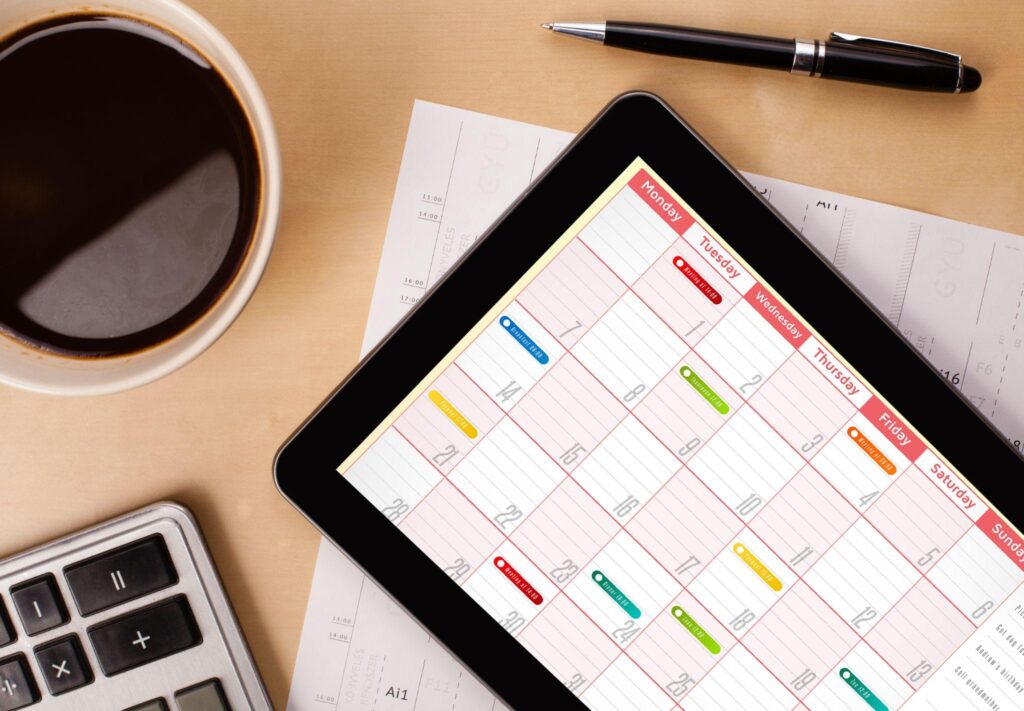I don’t think there are many of us alive who haven’t fantasized about walking into our boss’s office, middle fingers raised, screaming, “I quit!”
Even if your current job isn’t a hellhole, you might just feel that your current position and career path aren’t the ones you envisioned for yourself.
In this case you might be asking yourself, when is the best time to quit?
Some gurus suggest that you should forget about the idea of making a strategic exit and just pull the plug right away, barreling full steam ahead and figuring it out as you go along. In case you were wondering, this is TERRIBLE advice.
Now you’re left scratching your head and wondering what the heck you should do instead to get out of that unfulfilling career and get started building your own business…without putting yourself in financial jeopardy and ending up sleeping on your friend’s couch.
In this video I’ll give you a 7-Step Job Exit Strategy to help you smoothly transition from your current job to getting your own gig off the ground and generating a steady income stream as quickly as possible.
You can watch the video here or read the main points below.
(This post contains affiliate links, which means—at zero cost to you—I will earn a small commission if you click through and make a purchase. Thank you for your support!)
The 7-Step Job Exit Strategy Plan
Before you schedule that exit interview with your current employer, let’s make sure you’re ready to make the transition from company employee to being your own boss.
As romantic as it sounds, packing in your day job before you have another source of consistent revenue coming in is not the right path for most people. Are there exceptions? Sure. But for most people this is simply not a risk worth taking.
Finding yourself suddenly without an income stream can make you desperate, and most people make very stupid decisions when they’re desperate. You need to make smart decisions if you’re serious about building a sustainable business. Otherwise, you may just find yourself job hunting again.
Will you need to take some risks? Yes. But the risks you take should be smart, calculated risks, not ones that could potentially leave you destitute and sleeping on someone else’s couch.
So let’s get to the 7-Step Job Exit Strategy plan.
Step 1: Assess Your Current Financial Situation
An effective exit strategy begins with getting your financial house in order.
To do this, you’ll first need to assess where you are financially, right now, by looking at your net worth and your monthly cash flow.
Depending on your current financial situation, this can be super scary. I was always terrified to look at my bank statements and credit card bills. They’d completely fill me with dread. But this step is absolutely critical. You will NEVER, EVER, EVER get ahead financially without getting real with yourself and becoming deeply intimate with your finances.

Determining Your Net Worth
To determine your net worth, subtract your liabilities from your assets.
Your assets include:
- cash (checking and savings accounts)
- investments (in Canada these include RRSPs, TFSAs, and RESPs; in the US these include 401Ks, and Roth IRAs)
- physical property, including cars, real estate, and other valuables
Your liabilities include:
- consumer debt (credit cards)
- mortgage
- loans
You should recalculate your net worth at least once per quarter. Personally, I do this every month so I always know exactly where I stand. I want to see if I’m moving up, down, or staying the same so that I can change course if I need to.
If your current situation is like mine was, this may be painful at first. When I started tracking my net worth, it was -$45,000. This meant that I had to make $45,000 before I could say that I had a net worth of zero! As scary as that sounds, remember that knowledge is power. You can’t change what you can’t see. Once you start making progress, seeing those numbers rise in your favor is incredibly motivating.
Determining Your Cash Flow
You’ll also need to determine your monthly cash flow. For this you’ll look at money in versus money out—how much do you make in a month and how much do you spend? You’ll need these numbers for the next step.
Step 2: Determine Your Monthly Nut (i.e., Your Fixed Expenses, Variable, Expenses, and Debt)
After you have a good view of your current financial situation, your next step is to determine your monthly nut. Your monthly nut is the total of all of your monthly expenses.
Common monthly expenses include:
- mortgage or rent
- utilities
- cable and streaming services
- cell phone
- car expenses like gas and insurance
- debt repayments
- childcare
- life insurance
- subscriptions
- health insurance and any prescriptions (if you’re in the U.S. and your current company is paying for your health insurance, you’ll need to calculate what you’ll be paying on your own)
All of these expenses added together equal your monthly nut. This amount is the bare minimum your new gig needs to bring in each month to cover your basic expenses. I recommend tacking on an extra 20% for spending money and unforeseen expenditures.
That adjusted number is what you’re aiming to earn each month before you walk away fully from your job. Any less and you’ll be in real danger of being unable to pay for your basic needs until your business gets off the ground.

Step 3: Eliminate Your Debt
Next up, start taking steps to eliminate your debt. Ideally you want to erase all of your debt (excluding a mortgage, if you have one) while you have consistent income coming through the door. You don’t want to be put in a position of defaulting on your debts while you’re still getting established out on your own.
The fastest way to do this if you have multiple debt obligations is to knock out one debt at a time, paying off the one with the highest interest rate first. Pay the minimum payment on each of your debts while putting every last remaining available dollar toward the debt with the highest interest rate.
Once that one’s paid off, divert all of your available monthly dollars to the debt with the second highest interest rate while continuing to pay the minimum payment on all the rest. Proceed in this way until they’ve all been knocked out.
This is the fastest way to get rid of debt, and it gets faster with each debt you pay off because the payments you can make will be bigger and bigger as you have fewer debts to repay.

Step 4: Build a Buffer
If your situation is such that paying off all of your debt would take years (so that getting it all paid off before you quit your job just isn’t feasible), your best bet is to build yourself a buffer.
A buffer will give you some runway so that you don’t lose your shirt if things in your business don’t go according to plan. Think of it as insurance, but you get to keep the money if nothing ever actually goes wrong.
I suggest building a buffer of at least 6 months’ worth of expenses (your monthly nut x 6). I also suggest building a business buffer as well. Aim to have at least 3 months’ worth of business operating expenses in the bank. You don’t want to dip into your personal savings if you have a few hiccups in your business, and you certainly don’t want to go into unnecessary credit card or loan debt in your business because you have expenses that need to be paid.
Having these buffers can really help if your business revenue may fluctuate dramatically from month to month. When I was just starting out with KDP my revenue would sometimes fluctuate by thousands of dollars month-over-month, and it’s still the same 6 years later with my digital course business. Because of that uncertainty I like to have 3 months of operating expenses socked away in my business savings account. I also have a year’s worth of living expenses socked away as well.
Not having a buffer can leave you feeling constantly stressed out about how much money you’ll bring in every month. The whole idea behind having your own business and being your own boss is freedom, and you can’t feel free if you’re stressed out and worried about your finances.
Step 5: Give Yourself a Deadline
Now that you understand your financial situation, it’s time to make an action plan to get out of the 9-to-5 grind.
Start by giving yourself a deadline—your Freedom Day.
Using all of the information you gathered in the last step, create an estimate of how long it’s going to take to:
- pay off debt
- build a buffer
- get some consistent recurring revenue through the door
Keep this date in plain view as motivation for continuing on when things get tough—because they will.
Don’t worry if you have to adjust your date. It took me 2 years longer than my original goal date to hit my Freedom Day. While it was very disappointing at the time, it makes no difference to me today because I’m here now. Woohoo!

Step 6: Create a Schedule and Stick to It
It’s also important to create a schedule and stick to it. Treat your business like a real job, because it is! Come up with a real working schedule, including specific days and times.
Don’t try to just “fit it in” when you can; this approach won’t get you anywhere. Even if all you have is a few hours a week, be consistent and stick to your schedule. Remember, your business is a real business and you are the CEO. Think about what you would do if you had an employee who kept showing up late for work or not showing up at all. This is how you have to think about showing up for yourself in your business.
Step 7: Generate Your Monthly Nut For At Least 3-6 Consecutive Months
Once you’ve got your schedule down and are working on your business regularly, you’ll want to generate your monthly nut for at least 3 to 6 consecutive months. This will ensure that you’re onto something sustainable and that, at the very least, your business is making enough money to cover your basic expenses plus a bit of pocket money and some wiggle room for small emergencies.
When you’re getting close to this point it means you’re in the home stretch and you just need to be patient a little while longer, but this peace of mind is worth a lot!
Bonus Tips
It’s finally time! Once you’ve built your buffer, hopefully paid down most—if not all—of your debt, and have been generating your monthly nut consistently for at least 3 to 6 months, the only thing left to do is take that job and shove it!

Now, just a few more tips before we go.
Slow down for a smooth transition. If it’s possible, you might want to consider transitioning more slowly out of your job, especially if you’re someone who is a bit more sensitive to uncertainty.
Once your business is bringing in some money, is there a way you could reduce your hours or go part-time at your day job so you can spend even more time on your business and get things going even faster? If that’s an option for you it’s definitely worth having a conversation with your boss about what that might look like.
Get obsessed. Listen to podcasts, connect with like-minded people, follow those who’ve gone before you, and keep out all negativity. As much as I used to LOVE listening to true crime podcasts, I had to stop because they were warping my sense of the world and taking up too much mental space. Instead I started listening to business podcasts and the inspiring stories of other entrepreneurs.
Know that there will be trade-offs. When we’re committed to one opportunity we have to shut the door on other potential opportunities or we’ll spread ourselves too thin and get nowhere.
Make it your #1 priority. Finally, if you’re really serious about permanently leaving the 9-to-5, you’ve got to make it your number one priority outside of your health and the basic needs of your immediate family.
Try to get your family on board so they can offer their support and flexibility in accommodating your schedule. Don’t be afraid to ask for this. Your family will eventually be on the receiving end of a happy and fulfilled partner or parent who’s running a lucrative business, so they can help you get there now.
If you’re looking for some more help getting started with creating content and then leveraging that content into a profitable knowledge-based online business, grab my free guide, “The 4-Step ‘No Time to Waste’ Online Business Start-Up Blueprint.”
This guide takes you through ALL of the steps of starting an online knowledge-based business, from idea generation all the way through to creating an offer and marketing it to your audience, so definitely check it out!
